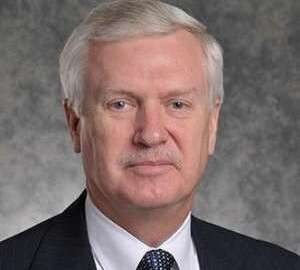
Agencies employ ‘cloud’ thinking to streamline mission
Too much data is often a deterrence for agencies making the mission of integrating info in a cloud environment even more important.
Government agencies collect data at record speeds these days — and it’s not always a good thing. Finding space to store the data and analyze it efficiently has become a priority. Leveraging more cloud services may be the answer.
The National Geospatial-Intelligence Agency is no stranger to cloud computing initiatives. Sierra Sellman said NGA is leading the way on executing and implementing capabilities into cloud systems — such as the Intelligence Community Information Technology Enterprise (ICITE), supracloud and Amazon’s GovCloud for example — that could one day involve all of the government agencies in collaboration.
“We are taking the expertise that Amazon has with their cloud environment and leveraging it for government capabilities,” Sellman, data scientist at NGA and finalist in the Women in Technology Leadership awards, said on Cloud Insights month. “I think not only is it going to have more staying power because now you have this common environment for all the agencies to play, but it might be a time saver.”
Analysts within NGA are most known for exploiting the imagery collected by the agency’s satellites.
“They’re looking all over the world and figuring out what’s going on, what activity is occurring [and] how can we best support our military and decision makers,” Sellman said. “With that, we use a variety of databases, tools and visualization capabilities.”
The data NGA uses for analysis comes not only from its own satellites, but also from a variety of other sources. And unlike in the past where information came in slowly, the agency wants to develop tools that will automatically sift through the large amount of data — specifically the imagery — and integrate it to provide reliable and real-time analytics.
NGA also sometimes partners with the military to receive imagery collected from drone operations. This helps to create a more robust picture and allows the agency the ability to manipulate the data, dive in and provide a better context of a situation in the region.
“We are very lucky because we are an agency that actually can capitalize on a lot of commercial activity,” Sellman said. “We have several partners that provide capabilities. We also have in-house capabilities because we are on a classified domain and we actually have analysts that develop their own tools.”
Sometimes, too much data is a deterrence, which makes this mission even more important. Sellman said NGA needs to find or create a system that will automatically extract information with real-time algorithms using machine learning to help analysts figure out what data is important for the mission, and what can be discarded.
One initiative Sellman has been directly involved in is a tool to help the agency move data smoothly from one cloud to another. The security team is rigorous with its programs to ensure the data coming in from other sources is not corrupted or manipulated, she said.
“We are trying to automate those steps though, because right now it can be lengthy,” Sellman said. “By automating [it], we can actually take it from weeks or months to days.”
It is a work in progress, she said.
‘Cloud’ thinking
The U.S. Northern Command has also added digital mapping and other cloud-computing capabilities to its agenda. These techniques have shown positive results in one NorthCom office in particular: Joint Task Force Civil Support.
The task force primarily deploys to an area after a catastrophic incident and provides support to civil authorities such as search-and-rescue or mass decontamination efforts.
Richie Richardson, geographic information systems coordinator at the task force, said the goal of the agency is to be able to directly plug into a cloud-like system without interrupting the area’s system. He said this gives them the ability to provide the civil authorities with the information they have gathered in a format that they can ingest and use to provide their commanders and teams with situational awareness.
He said having a way to plug into their own system, while still utilizing a cloud, is ideal to avoid potential vulnerabilities.
“It’s not only about the maps, it’s also about being able to integrate everyone’s maps, what everyone is doing [and] building a common operational picture,” Richard said on Federal Drive with Tom Temin. “Most agencies have invested pretty heavily in developing a common operational picture, but over the past what we’ve done is we’ve tried to synchronize and synthesize those pictures and we’ve run into technical problems.”
The major gaps in their capabilities come from the small scope of the picture.
“What happens is that your local governments tend to focus on their locality,” he said. “They may have other mapping information about what surrounds them, but it’s still limited in the scope of a catastrophic event or complex catastrophe could and may exceed the geographic boundaries.”
Richardson said engaging in more cloud-like thinking will help advance government agencies, and working together is the key.
Copyright © 2024 Federal News Network. All rights reserved. This website is not intended for users located within the European Economic Area.
Steff Thomas is a digital editor at Federal News Network.
Related Stories





